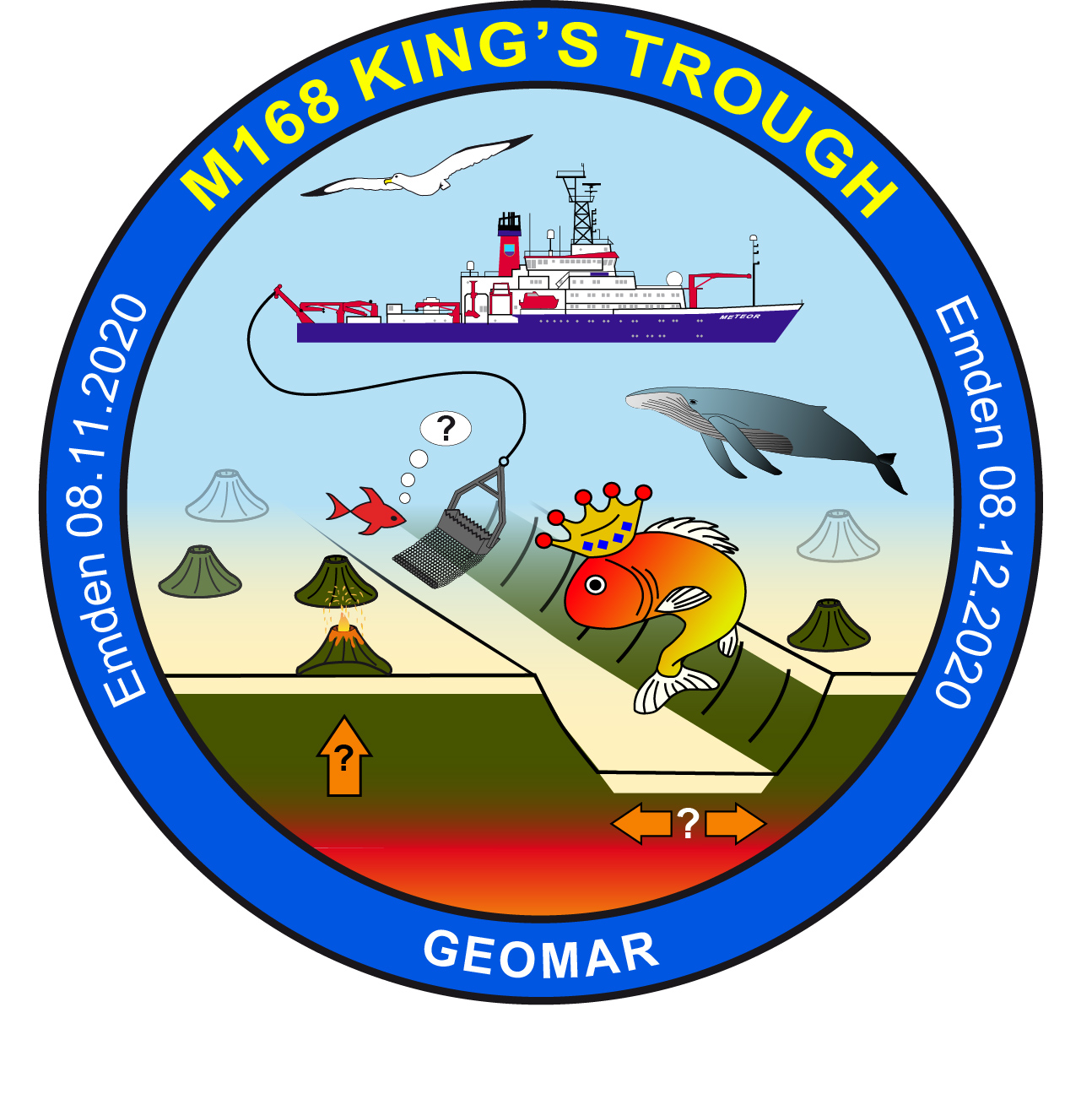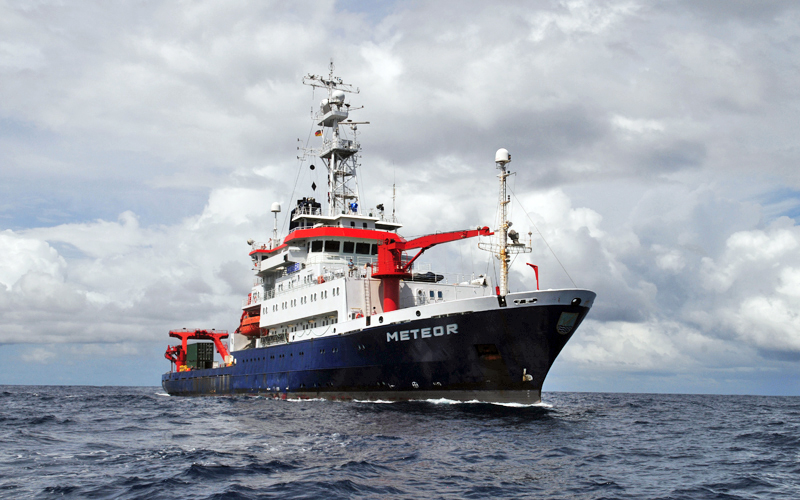METEOR M168
- Area:
- Eastern North Atlantic
- Time:
-
08.11.2020 - 08.12.2020
- Institution:
- GEOMAR
- Chief scientist:
- Antje Dürkefälden

The R/V METEOR expedition M168 leads to the King’s Trough Complex in the eastern North Atlantic Ocean about 700 km northeast of the Azores, which includes the prominent canyon-like King’s Trough and two smaller basins. With a length of 350 km, the King’s Trough is comparable to the famous Grand Canyon in the U.S.A. and with a width of 80 km and a relief of 4 km, it even exceeds its dimensions by far. The aim of the cruise is to conduct bathymetric mapping and to sample the flanks and the elongated seamounts on top of the flanks of the King’s Trough by dredging in order to reconstruct the origin of the complex. One hypothesis is that the basins could have been formed by extensional processes at a plate boundary and that the flanking seamounts and ridges could have been generated by magmatism related to a mantle plume. The proximity to the Mid-Atlantic Ridge further suggests a possible interaction of the presumed mantle plume with the spreading ridge. Sampling the steep flanks of the two smaller basins at about 6,000-3,000 m water depth aims to recover a cross-section through the oceanic lithosphere that is as complete as possible to get more insights into the composition of the lithosphere in this region of the North Atlantic. Furthermore, rock sampling of some of the isolated seamounts to the west of the King’s Trough, which are situated on elevated, plateau-like, seafloor, will help to investigate their origin and whether they are related to the King’s Trough formation.
The Azores-Biscay Rise is located directly in the southeast of the King’s Trough Complex and almost perpendicular to it. It has never been sampled before and will be investigated during the cruise as well. This about 700 km long structure consists of a chain of seamounts and ridges and could represent an aseismic ridge created by a ridge-centered hotspot or the intraplate hotspot track of a mantle plume. As for the other structures, the work program will comprise bathymetric mapping and sampling of the seamounts and ridges by dredging. The plan is to sample different morphological units in order to investigate if the features have been formed by different magmatic phases (e.g., a shield phase and a younger magmatic event).



